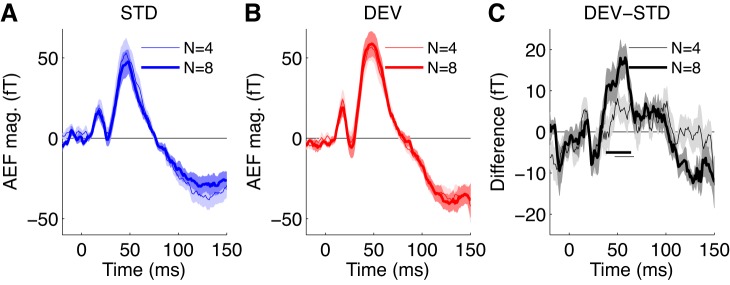Fig. 7.

Deviant-minus-standard differences in grand-average AEFs resemble those observed using similar stimulus paradigms in awake humans (cf. Costa-Faidella et al. 2011). A–C: grand-average AEFs for standard (A) and deviant (B) tones and the deviant-minus-standard difference waveform (C) for 400-ms IOI and either N = 4 (thin) or 8 (thick) conditions. Shaded regions indicate 1 SD of the bootstrap estimate of the SE (overlapping for N = 4 and 8 conditions). Grand-average AEFs for deviant tones differed significantly from grand-average AEFs for standard tones in both N = 4 and 8 conditions (with no significant differences between N = 4 and 8 responses). The horizontal bars indicate the region near 50-ms latency where the waves are significantly different at P < 0.05 for the N = 4 and 8 conditions. For comparison with a very similar analysis performed on AEFs from awake humans, see Fig. 2A in Costa-Faidella et al. (2011).
